Wayne C. Allen's Blog, page 19
July 2, 2019
A Reason For Being
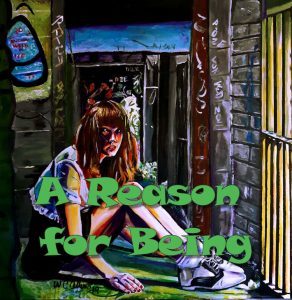
A Reason For Being — one of the hardest lessons to learn is that your reason for being is just another story you’re telling yourself
Sooo… 2019 marks the 20th anniversary of this blog. I don’t have the exact start date, but it’s been a journey.
Back in 2013 I retired, and Darbella and I have been travelling since. I’ve kept up a close to biweekly writing schedule.
But now, it’s time to bring The Pathless Path to an end.
This has been a mixed decision, as some of you have been around since the beginning, and many of you are faithful readers. People like my buddy Bill Bontrager have become great Internet friends.
On the other hand, the well is running dry. I’ve said and re-said what I believe to be so, and nothing convinces me that there is more to like than what you’ll read below. We tell ourselves stories, and that keeps us from being present in the only reality there is.
This moment.
I don’t have an exact “last article date,” but it will be this month or next.
I wish all of you well on your journey into self-responsibility!

Psst! Hey!
** Want more great writing designed to help YOU to shift your behaviour?
** Want to learn how to find, build or deepen your principal relationship?
** Want to know more about Zen living and being?

Back in the early days of Into the Centre I used the following quote as the basis for an article:
The range of what we think and do is limited by what we fail to notice.
And because we fail to notice that we fail to notice,
there is little we can do to change.Until we notice how failing to notice shapes our thoughts and deeds.
The person who introduced me to this quote attributed it to R.D. Laing. I later purchased the book it was supposed to be in, and couldn’t find the quote there.
Anyway, I really like this quote. In fact, reminding myself of the “truth” of this quote is key for staying on track with my life.
So, here’s what I think.
All of us have blinders on. As we’ve endlessly discussed, we’ve been conditioned by our society to do certain things, think certain things and take certain approaches when dealing with our issues and problems.
The “fail to notice” part is our unconscious resistance to that which is outside of our “comfort box.” For example, if we are used to a Western medical approach, we will have a “blind spot” to alternatives such as Bodywork or Chinese Medicine. On the other hand, it would be equally “blind” to only consider and use “Eastern” approaches.
Many moons ago I had a client who came in to have her “affirmations” fixed. She had been to a ton of “New Age” crap-filled seminars, and thought that, with just the right affirmation, she could have what she wanted.
Here is what she wanted: She wanted to have an affair with her carpenter, and wanted her husband and kids not only to be OK with this, but to actively help her make it perfect. Her belief was that, with the right affirmation, all of this would just magically happen.
She “failed to notice” that her family believed something else entirely, and that “something” could break her family apart.
I described my beliefs to her. I said that self-responsibility meant that she could have her carpenter (literally and figuratively) or she could have her family. She’d have to choose. And choice meant giving something up.
That was outside of her “belief box.”
I don’t think I’d be overstating the case to say, any time I have a “problem,” it’s because I’m failing to notice something.
When, for example, I did Bodywork, I was not thinking, “This is the be-all and end-all of life.” I believe that seeing how someone carries stress and blockages in their body indicates one part of their “life-story.” Bodywork is an indicator, and a powerful one.
It is one way of looking at the BodyMindSpirit… it’s just not the only way.
It’s like that Indian story of the group of blind men who happen upon an elephant. The guy holding the trunk says, “An elephant is like a hose.” The man holding the tail says, “It’s like a rope.” The man at the side says, “It’s like a wall.” The man holding the leg says, “It’s like a tree trunk.”
All are right, and all, like us, “fail to notice” that which is just beyond their reach. When we do not notice, we are as blind and the blind.
Which is why, I guess, I combine so many things into my life-beliefs. I explore philosophy, and I explore tribal conditioning. I explore communication, and explore what all of us are not saying.
I work at finding ways to physically express emotions, rather than following the typical approach of stuffing them, or dumping them over others through blame. And decidedly, I’m asking myself, “What, given my own blind spots (my “failing to notice,”) am I missing? What more can I discover?”
I’ve quoted from the work of Stewart Wilde, who repeatedly says,
“The way it is, is the way it is.”
To which I add,
“And the way it is, is often not as it first appears.”
“The way it is, is the way it is” is a gentle, non-attached position, taken from Taoism. It is not, “I am right about the way it is.”
I’ve know far too many people who, in their ego-driven entitlement, have a world-view that they think is right – that contains all the answers. They, like the men in Plato’s cave, confuse shadows with “reality.”
“Reality,” is seems to me, is fluid and dynamic and always includes more than is immediately apparent. If, for example, I think that my partner is the cause of our marital discord, I “fail to notice” my role in creating and sustaining the discord. If I believe that my upbringing predisposes me to sabotage myself, and therefore I am condemned to repeat past blunders, then I “fail to notice” that I always have a choice.
The world, and any situation, any thing and any one within it, is always wider and more complex than it first appears. Always.
To be free is to take chances, raise the bar and step outside of the box of comfort and “knowing.”
Or, you can choose to stay stuck in your beliefs.
Because it’s never about what you know. It’s always about what you fail to notice.
The post A Reason For Being appeared first on The Pathless Path.
June 10, 2019
Botox, Migraines and Insight

Botox, Migraines and Insight — what do migraines and Botox have to do with insight? Read on!

Psst! Hey!
** Want more great writing designed to help YOU to shift your behaviour?
** Want to learn how to find, build or deepen your principal relationship?
** Want to know more about Zen living and being?
I’ve been thinking about heads and headaches of late, for several reasons. One is that a friend just told us that she’s developing migraines. This reminded me of Darbella and me, many years ago. And of migraines, garden-variety headaches and wrinkles between the eyes.
Back when Dar and I started hanging out, which would be in late 1983 (Zowie) we were both doing the “migraine thing.” Dar’s frequency level was higher than mine, and she’d also have a tough time keeping anything in her stomach — which makes taking pills difficult.
One thing we noticed was that we seldom got migraines at the same time, which is good, as the non-sufferer can help the one with the migraine.
I won’t bore you with the details, but in the “early days,” prior to Imitrex, the only drugs that helped were narcotics. With the (thank god) advent of injectable Imitrex, our migraines were over in 10 — 15 minutes.
The interesting thing, for both of us, was that the frequency of our migraines started dropping… to probably 1 a year from (at least) one a month. We still get garden-variety headaches — I probably average 1 a week. I pop an Excedrin, and 99% of the time, the headache disappears. Same for Darbella.
I would attribute the change to several things — to Bodywork, to Tai Chi, and to our willingness to let go of obsessing.
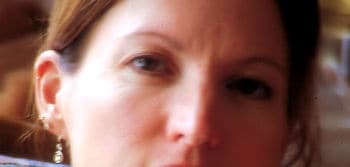 Botox Valley
Botox ValleyOur friend with the impending migraines seems overextended in the extreme. Her “taking care of myself” skills are pretty non-existent, as is her willingness to say “no.” And, she’s got those funny little cavernous lines between her eyes. You know… she’s got a Botox Valley. (Named by me, of course, for the principal location people inject botulism into — lordy, we are a weird people.)
Those lines are scowl lines, lines that scream, “You’ve got to be kidding!” It takes a fair amount of muscle tightening to create those lines, although people who make them often have gotten used to the forehead scrunching feeling.
My friend has a deep pair of lines, but she smiles, and says, “Life is much better!” Moments later, she’s grabbing her shoulders and saying, “Except for this blasted headache. It’s been 3 days!” Ouch.
Think about Botox, Migraines and Insight.
Let’s revisit the Botox stuff, for a second. Botox works by paralysing the muscles that cause the wrinkles. In other words, the muscles (and the skin,) go numb. Hollywood is actually concerned, as actors who have received the Botox treatment no longer can express emotions, as their foreheads won’t move on command.
Much like Prozac, Botox is a way to numb something out so a person can ignore it. Botox doesn’t deal with why the person chooses to “scowl” in the first place. It simply makes it impossible for the person to scowl. However, nothing changes regarding the emotional state of scowling. It just doesn’t show.
Two more pieces to this article. The spot between the eyebrows where the scowl lines manifest is also the 6th chakra. The 6th chakra has to do with insight and intuition. In Indian thinking, this is the location of the third eye. In the West this is the location of the Pineal gland, which reacts to light.
So, here is the analogy I use: clarity of insight requires the ability to look, simultaneously, inside and out. The theoretical location for this process is the 6th chakra. If we tighten the area, creating wrinkles, we are doing the biological equivalent of trying to see through crumpled cellophane. What little you “see” is not very clear.
From a psychological POV, you might say, “All of that scowling and indignation is a judgement about internals and externals, whose only purpose is to create blocked feelings or emotional outbursts.”
I would suggest that insight (let’s use the word to suggest internal and external clarity) is a process not of fighting to be right, nor a process of defensive posturing, but rather a place of “simply seeing.” From this place of clarity, I let go of the need to change others, to be declared to be “special,” or to punish myself for being somehow “less” than I “should be.”
Here’s an example: Love at first sight is all emotion and no insight. It’s hormonally driven and all about bells and whistles. Love at first sight gets our juices flowing, and in the end, it’s pretty meaningless.
Love with insight is the ability to truly see the love object, which might be pretty much anything, in a clear and thoughtful and yet not attached, not emotional way.
When we are caught in the emotion of “love,” (or any emotion, for that matter) then scowling is inevitable. We have “fallen down and can’t get up,” trapped in our illusions, our fantasies, our need to control others or situations.
When we are living with insight, we see from multiple perspectives. We see others as they are, while choosing not to be “run” by them just because we care about them. We hold all things with a light touch. A non-critical, non-judgemental touch.
In this lightly holding stance, our bodies begin to flow, naturally. We learn to “let go” of chronic tension, even the tension we no longer feel, numb as we are. The pressure (“I think my head is going to explode!”) is no longer necessary, nor appreciated, so it can simply be put aside.
Headaches, Botox, insight, looseness, tightness. Inter-wound and intermixed. De-crease yourself. Insightful, eh?
The post Botox, Migraines and Insight appeared first on The Pathless Path.
May 20, 2019
Outgrowing Teenage Rebellion
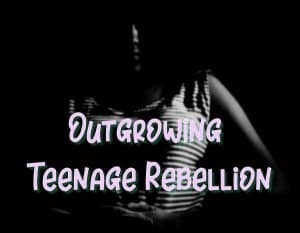
Outgrowing Teenage Rebellion — kids will be kids, but mostly our world suffers when the kids refuse to grow up. Or when the parents don’t want them to.

Psst! Hey!
** Want more great writing designed to help YOU to shift your behaviour?
** Want to learn how to find, build or deepen your principal relationship?
** Want to know more about Zen living and being?

I find it interesting, hanging out with teenagers. The more I look, the more all sorts of patterns emerge.
To wit: The palpable weirdness of the typical teen is a result of their attempt to fight against their cultural and tribal conditioning.
The problem is, they have no tools for the battle.
Let’s think about this for a minute, because it fits in to what we were talking about last week — the bit about making “giant motes.”
We make mountains out of molehills precisely because we consider the “molehill” situation to be important.
And then, we either
give up, (because “it’s just too big to handle,”) or
rebel, (we act like a screaming, tantrum-y child.)
If, on the other hand, if we dealt with the issue by dealing with ourselves… well, we’d have to own our adulthood, and for many, that’s way too much self-responsibility.
As to the “no tools” bit… Kids from 0 to 6 or so learn a ton — they learn more in the first 6 years than they will for the rest of their lives, quantity-wise.
However, the “stuff” they are learning is taken in “whole.” This is because they have nothing to compare it to or judge it against. They simply accept it as “true.”
The implications of this are enormous.
This is why tribal information and beliefs are so hard to dislodge. We learned those things when we we were too young and inexperienced to evaluate them… questioning the beliefs’ validity was not possible.
Because, to say it again, we had nothing to compare the data to. We accepted its validity without a clue that this was what we were doing.
A similar thing happens when we become teens. The “adolescence project” is” moving from a dependent kid to an independent adult. However, and here’s the kicker, we once again have to do it without any tools.
Adolescents are attempting to act like adults without any previous adult experience. All they have to go on is what they see other adults doing.
They may want to be treated as an adult. Wanting does not make them one.
When it comes to learning to “adult,” none of us really had a clue.
So, without experience or training, most teens simply founder along, stumbling into a semblance of adulthood. Doesn’t work very well, but that’s what happens… and society reaps the consequences.
As the century goes on, though, I’m seeing fewer and fewer actual adults. Oh, I see 50 year old victims. I see middle aged parents trying desperately to manipulate their teens into “behaving.” I see adults having temper tantrums, losing control, and whining about how hard it is to grow up.
Which simply makes the transition to adulthood incrementally more difficult for their teens. Because, remember, teens do not innately know how to be adults. They learn from their increasingly inept, “never quite grown up” parents.
Most teens chose one of two methods of becoming adults — compliance or rebellion. To this I dedicate the rest of this article.
Let me provide an illustration or two. I’ll give you both sides of the coin — teen compliance and teen rebellion.
Compliance — One former client typified compliance — she’d do anything to avoid conflict — she became an expert on pouring oil on troubled water.
Her dad had an alcohol problem, and my client decided, at age 13, to never cause her father any grief. She decided to be the perfect “good little girl” — these were her words.
She was a top student, she worked with disabled kids, she was a High School athlete. AND, practically every night she would listen as her dad ranted about how unfair his life was. During the tirades, her mom made herself scarce.
Finally, because her dad didn’t like tears, anger or overt displays of emotion, she learned to stuff her feelings and focus solely on making him feel better.
Her stress levels were amazingly high, but she kept adding stuff in as diversions. More work, more projects, more relationships. She was in therapy because she was heading off to University. While she saw this as finally escaping from dad, she also recognized that she was taking herself with her to University.
This is the kicker. Her method of becoming an adult had been to completely surrender her world-view to that of (whiny) others.
She (at age 13, for god’s sake) had made herself into the savior and salve of her parents. I think there’s nothing more pathetic than a parent who wants their kid to be the adult in the relationship, but many try it.
She had absorbed the belief that her role was having to put the needs of others before her own. She’d learned to work hard and be “perfect,” lest anyone else suffer.
Therapy was a way for her to look at her choices, and to make changes. Because otherwise, she’d work herself to death trying to make everything “OK” for the significant others in her life. And remember!!!, she’d made that life-choice at age 13!!
The “gift” her parents gave her? Without continual vigilance for the rest of her life, she was doomed to instinctively drop into this pattern. But she had an excuse… “What else can I do? It’s just the way I am.” Yikes.
Rebellion — There’s a lot of this these days. Teens refuse to cooperate, bag school, fail courses, scream and yell, violate curfew, and then do it all again the next day. The rebellion comes as the teen attempts to differentiate from his/her parents.
In rebellion, the differentiation is not thought out and logical. It is simply a “no.” Its fighting against the rules, traditions and directions of parents and society.
If it’s not encouraged or fought against, most teen rebellion eventually ends. So, interestingly, the best parental response is detached awareness.
When the teen is angry, abusive, yelling and screaming, he or she is caught in an ages-old dilemma. They want to be treated as an adult. They want respect, but are unwilling to earn it or give it.
If the parent tries to force compliance, the battle will be endless. The only real solution is for the parent to always be the adult. There can be consequences, but never punishments. There can be rules, but no physical enforcement. Not easy. But hey, someone has to be the adult.
People who become adults without outgrowing this version of the teen transition think that getting angry, throwing things, insisting on their way, and then expecting someone else to clean up their messes is mature behaviour. They constantly pick fights, refuse to accept personal responsibility and can find fault with anyone or anything.
I’m not big on blame, but I do blame the parents. The teen, remember, needed a role model, not someone to fight with.
Many people liked the last article. One person wrote:
The truth of the matter is that I can be productive only if I take good care of myself, therefore, I need to come first in order to be happy, healthy and fulfilled. I find that when I am not feeling well, I can quickly become an asshole with little or no provocation. I have to often made mountains out of molehills…Taking time for myself this morning has been the best thing I’ve done for a while, reading this e-zine has helped me to see more clearly that life is only as complicated as I want to make it. The reality is that relating to people is a lot more fun and less stressful than trying to belong. Trying to belong means that I have to fit the mold of other people’s expectations, relating means that I am free to be myself and those I relate with are free to be themselves. It all makes too much sense; now all I need to do is to relax, and be me. Easier said than done!!! This will take some reshaping in order to break a life long pattern. At least I am seeing the big picture a whole lot differently now! Thanks for the work you put into these articles, it is much appreciated.
Yes, indeed and in spades. The “easy” route is to blame others, to stay stuck, to do what you always do. The “narrower” path is to let go of living one’s life in reaction to others and to choose a path of self-knowledge and self-understanding.
Many of the patterns that trip us up were chosen by us as teenagers, in response to the need to differentiate. Many of the ways we chose to do this necessary task were immature and downright stupid. Many of our attitudes regarding work, leisure, sex, our bodies and our self-worth were also adopted as teens. Most of them are immature and downright stupid. And we persist.
The way out is self-reflection and self-responsibility. Just because I decided something when I was 15 doesn’t mean I have to live it forever. I may have a strong pull to act a certain way, and I can equally pay attention, notice and make a better choice. Each and every time.
But not if I don’t pay attention — if I don’t look at what I am choosing and what I am doing.
This week, make the commitment to actually become an adult, as opposed to a whiny teenager. And then do it.
The post Outgrowing Teenage Rebellion appeared first on The Pathless Path.
May 6, 2019
Beliefs and Motes
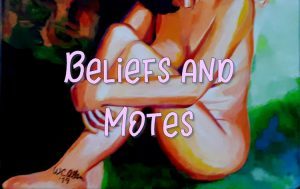
Beliefs and Motes — There is no objective reality. Everything is filtered through our beliefs. Knowing that can make a difference.

Psst! Hey!
** Want more great writing designed to help YOU to shift your behaviour?
** Want to learn how to find, build or deepen your principal relationship?
** Want to know more about Zen living and being?
 A little bit of dis, a little bit of dat
A little bit of dis, a little bit of datToday, I want to mention a quote from Tom Robbins’ Fierce Invalids Home from Hot Climates.
I’ve always loved a good turn of phrase and Robbins’ writing abounds with them. Plus, I love the underlying philosophy.
Switters is the protagonist, and at one point is talking with a nun. He goes off on a segue about what’s wrong with the world. He declares that all of the world’s problems are the result of what he calls the “killer B’s.”
His “B” list goes on for some length — bombs, beheadings, bloodshed, etc. His point, however, is this — the two banes of existence are Belief and Belonging.
Switters is quite aware of the connection between belief and belonging — which in turn is based upon socialization. Socialization is the process of teaching infants and children “the rules” — and those rules are all about fitting in to one’s tribe.
It’s true that belief and belonging lead to behaving .
Before I retired, I seldom if ever saw clients who had true mental illnesses. What I did see were people caught in a crisis of meaning — whose beliefs and need to belong had led them far down a path of inauthenticity and false bonding.
As we move further into the 21st century, what is surfacing is abject fear. Some of the fear is based upon the nightly news — Trumpism, climate destruction, etc.
There’s an internal sense of both dread and deadness.
“There must be something wrong with me. I’m following all the rules, being a good person… and I’m unhappy and sick and tired and lost. This is not how it’s supposed to be.”
The fear is, “The world is going to end, and I’m going to die unfulfilled.” And the truth of it is, this is so… unless you are willing to let go of the beliefs, the behaviours and the belonging.
No wonder it’s scary.
I continue to amaze myself with the cross-generational interference I see. Parents who continue to manipulate their grown children… trying to get them to behave, to follow the rules, to be the perfect son or daughter.
This despite the fact that the grown children have lives of their own… and are emphatically not there to fulfill the parents’ needs. EVER.
Or grown children trying to get mom and dad to behave differently, to treat them differently, despite the fact that they’ve been treated this way all their lives. They’re unable to let go of the illusion of belonging to a perfect family — despite knowing nothing is perfect about good old mom and dad.
Or spouses desperately trying to manipulate their partner into behaving. Guilting, blaming, cajoling, or playing the “I have your best interests at heart” game.
As opposed to letting go.
We really need to loosen our grip on the rules, the regulations, the rigidities we have all been subjected to. All of which begins with an understanding that nothing is “real”… nothing is “true”… for all time and in all places. Beliefs, behaviours, belonging — social conventions — nothing real, nothing true, about any of it.
Most people choose to stay stuck and wallow in self-pity, occasionally seeing a therapist for just enough “support” to maintain their beliefs, without challenging or letting go of any of them.
Rare is the person who, having been stuck for decades, suddenly decides to drop the drama and to become simple. To simply let go. To simply begin living life in the moment. To choose behaviours and beliefs based upon utility rather than on habit, coercion or fear.
This letting go of the “should-be’s” is initially traumatic — then suddenly freeing.
Something else crossed my desk this week — it was a line in an e-zine I subscribe to. It’s for writers. There was a lovely line that contained a mistype.
The author likes to go on at length about the deeds of her offspring — paragraph after paragraph of “family news” before we get to the writing stuff. I usually skip past it. For some odd reason, my eye got hooked, and I found the gem.
Anyway, she was writing about a trip to the beach with her kids, and about how they were building sand castles. Complete with a moat. Except what she wrote was that the kids had built a “giant mote.”
I about snorted coffee out my nose.
I suspect that “mote” is not a common word any more. It’s Old English, and means “speck,” or “a tiny amount of anything.” So, according to her expression, “giant mote,” we get a “huge speck.”
Or, perhaps a giant mote is “making a mountain out of a molehill.”
I got a picture of two kids with tiny shovels, digging minuscule holes in the sand and screaming “look at the size of that one!” (Apparently, even in childhood, size matters… J ) Drama, drama everywhere, and no one notices its “mote-ness.”
We train ’em young, we do. As if anything short of dying is irreversible. As if making things big and important actually has relevance. As if making myself important means I actually am important, as opposed to a caricature of a real human being.
As if “my drama is bigger than yours” is a “good thing.”
One of the joys in my life is how good I’m getting at noticing when I’m being dramatic, and making “giant motes.” Ram Dass called losing the drama “Nobody Special Training.” Which flies in the face of our cultural beliefs, behaviours and belonging-ness.
Rather than building giant motes, or even giant moats, perhaps we should simply learn to doff our pretenses, drop the shit we’re shovelling, and have a roll in the sand. Maybe, from a rules and roles perspective, it’s all about nothing. Maybe instead of digging a hole, I can “dig” being whole.
In the end, life is about passion, not behaving. It’s about relating, not belonging. And it’s about who I am and how I choose to interact with the world — not about blindly following the beliefs that mommy and daddy and society taught me.
And it’s about remembering that it’s all a “giant mote.”
The post Beliefs and Motes appeared first on The Pathless Path.
April 15, 2019
Patiently Seeing
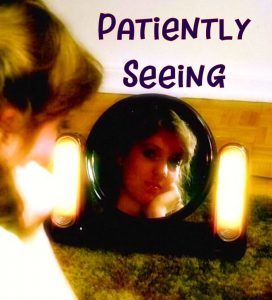
Patiently Seeing — we really want people to make things easy for us, and when they don’t we make ourselves unhappy. There is a way past this.

Psst! Hey!
** Want more great writing designed to help YOU to shift your behaviour?
** Want to learn how to find, build or deepen your principal relationship?
** Want to know more about Zen living and being?
Fairly quickly after my article on the guilt button went out, a reader wrote with a question. Here it is:
First I would like to say your article on guilt is very good. It shows how selfish people can be when they develop what I call the “me” attitude and use it to the hilt.
My question is what do you do about the ultra selfish person that demands and attempts to press the guilt button with no success. I don’t think you said anything about it unless I missed it.
Some years ago, a friend showed up on my doorstep. She was then the mom of three daughters, and also taught with Dar for many years. Her eldest (whom we first “met” in the hospital hours after she was born) had just started grade 8, puberty had hit, and times were getting interesting.
By the time our friend showed up, said daughter had put mom through several weeks of lousy behaviour. Which was the opposite of how the daughter had behaved for the first 13 years.
Mom looked bedraggled… and tired… and stoop-shouldered. She asked me for a chat, and told me what was happening — about the yelling and confrontations about rules, clothes, behaviours.

Mom was really twisting her knickers into a knot.
I said something about doing what she could do to provide structure (curfews, minimal acceptable grades, for example). Send the kid off to do what they need to in their room. Meet the kid’s anger with calmness and focus, not yelling and confrontation (someone has to be the adult.)
I reminded her that she was a teacher and that she dealt with weird behaviour for a living. Of course, she wanted to argue that it was “different” because it was her own kid.
Well, no, it isn’t. It’s just that with her own kid, she wanted absolute control… not only of her daughter’s behaviour, but of her personality.
With her students, her goal was solely control of behaviour.
What I mean is that, with her daughter, the issue was all around the mother’s judgement about how her daughter “should be.” With her students, there was much more acceptance of the shifting personalities of the students, and not taking on blame when they misbehaved.
I suggested that the mom simply listen and be non-reactive. There’s nothing inherently terrible about kids yelling at adults. Many seem to go through this stage. If you try to force them not to, all you gain is a power struggle and more yelling.
On the other hand, if the kid learns that yelling and screaming gets them nothing, they ultimately stop.
In this case, it took about 6 months for the daughter to find her sea legs… 6 months seems to be pretty normal.
Many parents decided that they can’t put up with the weird behaviour for that long. So, they tried to control — read STOP — their kids’ behaviour.
This ploy never works… and then the “cure” takes about 6 months. So, the only real question is, do you want to get the 6 months out of the way now, or start after 6 months of additional yelling?
While I haven’t specifically answered the question, above, I actually have answered it in the abstract. What I’m getting at here is what the Buddhists call “detachment.” Detachment is the skill (it is a skill, not a given) of letting go — of not tying my self-perception to what others are doing, saying, or even thinking.
Detachment means that I keep my attention on myself and on how I am acting and responding to the situations around me.
Implied in the above question is this: “given that the “ultra selfish” person keeps pressing the guilt button with no success, how do I get them to cut it out?”
I have no expectation that anyone else on the planet is going to cooperate with me, just because I want him or her to.
The answer, which we don’t want to hear, is that we can’t.
Eckhart Tolle, in his book, The Power of Now, suggested that there were 4 ways to deal with uncomfortable situations: The least effective (and not worth talking about) is griping about the situation. The other 3 are: acceptance, changing the situation (from your side) or leaving.
The illustration above, with my friend and her daughter, demonstrates acceptance and change.
First of all, acceptance was required. The daughter was 13, and into her hormones and into her teen rebellion. Fighting against that is not going to change it. Secondly, the mom changed her behaviour from trying to force her daughter to behave to being willing to listen to her vent and dump and hurt and cry and scream. While she never liked listening to the 13-year-old harpy emerging from the depths of her “perfect” daughter, she learned to accept it. Through detachment.
She made her daughter’s behaviour about her daughter,
and her own behaviour about herself.
The third option, leaving, is difficult but available. I had 3 families over my years counselling who let their 16-year-olds know that certain behaviours (drug use, failing school) would result in the teens being turfed out. Parents have this right and need to use it, sparingly and compassionately, but use it none the less.
More often, the “leaving” piece needs to be used when parents won’t get off their grown children’s case.
Many clients had parents who always criticized them, under the guise of “It’s for your own good.” Despite that, they kept going back to their parents for advice. And every time they’d get the same thing — “You’re a failure, you’re stupid and I can’t believe you’re my son or daughter.”
I encouraged these clients to stop going to their parents for pretty much of anything.
Bust back to the topic: I mostly opt for acceptance and changing my behaviour.
In my 20’s I actively tried to get my mom to stop trying to run my life. I’d yell and insist that I was capable of making my own decisions. She’d pull out the “I’m your mother. Look what I sacrificed for you. Do what I want, for me,” bit. I’d bridle and argue and defend myself, and she’d sit there and look injured.
I began to figure myself out while in training to be a therapist… around 30. (Old soul — slow learner…) I realized that what I wanted was for my mother to behave in a way that would make life easy for me, and my motivation was exactly the same as hers. “If you loved me, you’d do it my way.”
What I did was to give up trying to change her, and rather decide how much time I wanted to spend with her.
Interestingly, my mom and dad followed me to Canada. They never lived more than 30 minutes away from me. When I took churches, they moved nearby and attended.
Mom always introduced herself as, “Hi. I’m Erma Allen, the Minister’s mother.” She had an opinion about everything I did, what I wore, and how I cut my hair. (My ponytail used to drive her nuts. When she complained, I’d take out the elastic and let it hang loose.)
My decision was to love my mom for whom she was. Not easy, some days, but I’m no prize some days, either.
I learned to listen without attaching to what was being said. I learned that, forever, she was going to use guilt as a tool to try to get me (and my dad) to toe the line. Then, she was going to get frustrated and angry when we wouldn’t comply. Finally, she’d shake her head resignedly and say, “Well, I guess you’ll never change.” And I’d agree.
Because of my shift in approach and my refusal to engage in “guilt motivated behaviour,” the last 20 years with mom were the best they could have been. We had much quality time together, and I’d just smile and go home if she got too deeply “into herself.” Which I suppose means I was using all three behaviours. What I wasn’t doing, emphatically, is expecting her to change so I could be happy.
So, the short answer to the question is, accept, change your behaviour, or leave. Making yourself miserable over the behaviour of another is really the last choice. And no, no one is going to change to make you happy.
And it doesn’t matter, anyway.
The post Patiently Seeing appeared first on The Pathless Path.
April 1, 2019
Blame and the Guilt Button
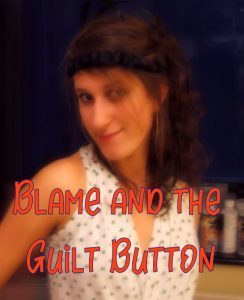
Blame and the Guilt Button — people use blaming as a weapon — using guilt as a way to manipulate others into doing their bidding. The cure? Self-responsibility.

Psst! Hey!
** Want more great writing designed to help YOU to shift your behaviour?
** Want to learn how to find, build or deepen your principal relationship?
** Want to know more about Zen living and being?
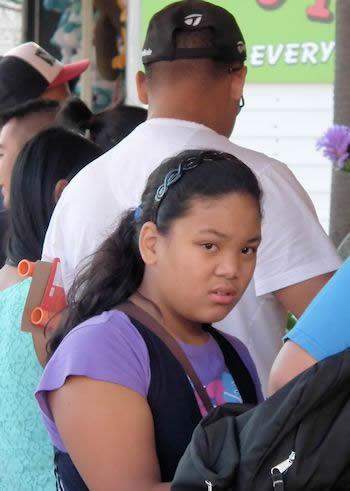 You have to do it for me!
You have to do it for me!I suppose if I have one attribute that I wouldn’t want to be without, I suspect that “the key to my success” (such as it is) might be that I, quite early, learned to disconnect my “guilt button.”
God knows I’ve been worked on by experts, and yet there is something going on in me that causes attempts at manipulation to run off of me like water off a ducks’ back.
A few concepts, before we dig in.
Guilt is different from “taking responsibility when I’ve made a mistake.” I notice when, on the few occasions J that I screw up, I’m pretty quick to own up, apologise and do what I can to make amends. On the other hand, I have a real nose for when people are making a move in the direction of trying to “make me” responsible for their stuff.
Ben Wong and Jock McKeen, in The NEW Manual for Life, differentiate between guilt and shame. They write that guilt is always based upon transgressing an externally applied norm. Shame, on the other hand, is related to the feeling one gets when one realizes he or she has not been “all that they could be” in a situation.
In other words, shame is directly connected to a failure in personal responsibility. Guilt is related to a wish to divert attention away from the self, and is also about resistance to making personal change.
My mom, who died in 2000, in addition to having a ton of great attributes, was an expert at “doing blame” in an attempt to make others feel “guilty.”
Part of her shtick came from a profound sense of entitlement. Until the day she died, she assumed that the importance of how she saw herself and what she wanted should take precedence over the life choices of everyone else.
“How can they treat me like this?” was shorthand for “Don’t they know who I am?”
Growing up and watching mom do the “blaming thing” to get her way steeled me against the wiles of the guilt trap. I still remember a call I got from my mom, back when she and dad were in their 70’s. The whole point of the call, mom being in tears throughout, was to let me know that dad had finally said “no” to her. “I can’t believe it! I never thought I’d live so long! He said, ‘no!’ ”
Let’s be clear here: if the things requested by “guilt button pushers” didn’t, at some level, make sense, they’d have no effect on us. The hook is in the underlying message. The underlying message is, “I want you to violate yourself, so that you’ll cave in do what I want you to do.”
This differs from a request, which goes, “Here is my preference. What do you choose?”
The way through “guilting” is to learn to be self-responsible; to address “guilters” this way:
“That you want me to be a certain way is interesting. I choose to be the way that works for me. Whether you choose to hurt yourself over that or not is your choice.”
Most people never get to this place.
Why? Because people put more store in the opinions of others than in their own self-understanding.
My dad, on the other hand, was pretty good at dealing with reality without expectation — good at disengaging from guilt. He was eminently self-sufficient, and dealt with life as it came. He dealt with his emotions directly and efficiently.
Back in the early 70’s, he was working at Radio Shack, and the store got robbed. Dad would have been in his 60’s at the time. The robbers tied him up with speaker wire, threw him to the floor, and stole his wallet and engagement ring. Then they sat on his back and clicked a gun next to his ear, and threatened to kill him. They left after 15 minutes.
A customer found dad trussed up several minutes later.
Initially, dad was really pissed off at every person of the racial group of the people that had robbed him. He railed against “them,” and started using racial epithets. I listened and encouraged him to dump. After 3 months he bought me a cup of coffee and said, “Wow. I almost became a racist over the actions of two guys. I could have spent the rest of my life hating. Close call, huh?”
So, it was interesting that, a year after mom died, my dad attempted to push my “guilt button.”
After mom died, we sent her body off (as per her Living Will) to the University of Toronto Medical School. They told us that they might use her body for as long as three years. 18 months after mom died, they were done, and she was cremated.
The ashes ended up at a cemetery in Toronto, awaiting pick-up. I told dad. Never one to want to deal with the dead, he said, “This is your mother. What are you going to do about her ashes? A good son would care about his mother and deal with all of this.”
I replied, “It’s not my mother. It’s her ashes. And the decision about the disposal of her ashes is yours.”
He tried to pass the buck a couple more times, to both Dar and me. We resisted being “guilted” into deciding. He got mad, then quiet, then went home.
I picked up the ashes, and let dad know. He still tried to pass the buck about what to do with them, but he was smiling. Because his attempt was no longer serious, I suggested a place she’d loved as the best place the ashes could be scattered.
His smile deepened. “She’d like that. She loved that place.”
For me, the difference was in dad’s intention. Dad initially tried to play on my emotions; “She’s your mother, and you’re being disrespectful.” His message was that there is a certain way I was to act, based upon a societal norm.
My message, in return, was to notice, aloud, that dad was using guilt to pass the buck, thus avoiding a difficult decision he didn’t want to make. I oped out of that game. Once dad stopped with the games, things changed.
He moved from “guilting” to asking — trying to manipulate me into taking over by pushing the “guilt button.”
Emotional blackmail is rampant in our society. Saying, “I’m emotionally upset and having difficulty deciding. Please offer your opinion,” is different from, “If you were a decent person, you’d stop being a jerk and bail me out.” The first is a self-responsible asking for assistance. The second is an attempt to manipulate through guilt.
Guilt is an interesting thing. It’s always linked to someone not wanting to take responsibility for their own “stuff” — linked to someone trying to use emotions to get someone else fix their messes.
Think about your experiences with guilt. Do you use guilt and manipulation to get your way? Are you victimizing yourself when others use guilt with you? The way out is simple.
Self-responsibility, once again. As always.
The post Blame and the Guilt Button appeared first on The Pathless Path.
March 19, 2019
Shallow Living

Shallow Living — It’s easy to get caught up in our dramas, mess up our bodies, and then just sit there, wondering what went wrong.

Psst! Hey!
** Want more great writing designed to help YOU to shift your behaviour?
** Want to learn how to find, build or deepen your principal relationship?
** Want to know more about Zen living and being?
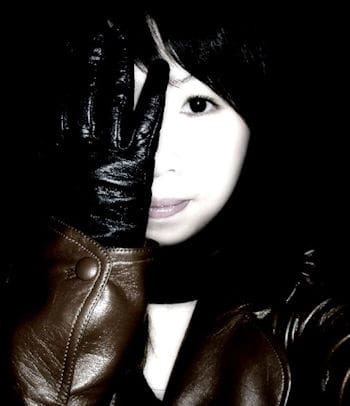 it’s easier to hide
it’s easier to hideDespite being retired for the last almost 6 years (!!!) I still think about the mind / body connection.
A friend and I were talking about Bodywork the other day… and that brought to mind a 16-year-old client I worked with, years ago.
I’d love to have a photo to show you, as seeing her as I see her would help you to relate to what I’m about to describe.
Here is the Bodywork part.
Working down from the top: she was —
a pretty girl with wide eyes, whose “look” shifts from wide-eyed astonishment to guarded fear.Her jaw was locked, her mouth barely opened.Her shoulders and neck were rigid, and if I said anything positive about her, her shoulders would rise to her ears, a position called “turtling.”Her shoulders were also tilted, left side higher.Her chest was sunken in.When she moved, there was no natural movement to any part of her body.And… she had a stomach ulcer.
What I saw told me a lot about the young woman.
Her eyes gave away her confusion about how the world works, and about how she works.Her confusion shifted to a self-protective stance when pressed to talk about herself.Resistance to talking (the fear being that one will inadvertently reveal something best kept hidden) was demonstrated in her stiff jaw and throat.Her turtling often happened after I made positive comments. It’s an automatic “I don’t want to hear this,” (shoulders over ears, so to speak) reaction — she thought positive comments were either wrong, or manipulative… or both. Turtling is also a self-defense mechanism — a way to hide from whatever fearful thing is coming.A caved-in chest is indicative of “heart-hurt”: she’d been hurt by someone or several “someones” whom she loved.Lack of movement is a way to contain life energy — it’s being kept under tight control, lest she feel something.
An ulcer is Third chakra stuff,
it relates to self-esteem issues… a wish to “dissolve the self.”
Our emotions are meant to be a sine wave. (See the image below.) We’re thinking about the amplitude — the height/depth of the wave.
The norm is for the body to seek balance. So, for example, if I’m unwilling to explore and express my anger, I’m automatically limiting the amount of joy I’ll experience. If we limit our expression of the “down side,” we’ll also limit the possibility of feeling the “up side.”
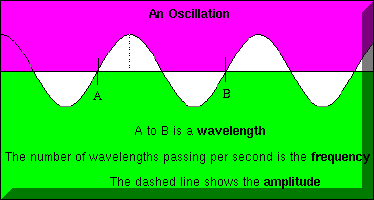
My client had told me that the “house rule” was, “Don’t express sadness or anger in front of my parents, as they find it uncomfortable. Stuff your feelings. Things will get better on their own… some day.”
She physically demonstrated the body of a person who was stuffing everything she felt. She did so by tightening her muscles to hold herself in.
When I said, first session, that her type of holding could lead to stomach problems and even eventually ulcers, she smiled and said, somewhat proudly, “I already have one!” Ouch.
She was actually pleased that she’d learned to contain herself… despite the fact that all of that blocked energy was literally eating her alive. Because her stomach hurt, she’d already tried the normal Western coping mechanisms — drugs, alcohol. It hadn’t worked, so she was seeing me for her “depression.”
Now, depression isn’t an emotion, any more than paranoia is an emotion. It’s a state of being.
Depression at its core is a repression of feelings… achieved by going into a state of inertia.
It may feel like sadness or despair, but it’s actually a tool to repress feeling what’s really going on.
As a socially acceptable “illness,” depression garners sympathy and Prozac.
What chemicals like Prozac do is, it gets people right out of the sadness and firmly into neutral.
My client was on an antidepressant that also helped her sleep. However, as a side effect, she had little or no affect. At age 16, she was in neutral… she had no passion… for anything.
And this, our society declares, is somehow OK.
Needless to say, I disagree. We need to find outlets for our feelings, our containment. We need to scream, to pound a heavy bag, to (safely) let all of the repressed feelings out.
We need to commit to actually feeling our feelings; to be willing to accept all of ourselves. The sad parts, the happy parts, the drippy parts, the grieving parts, the horny parts and the neutral parts. None of it is bad, none better than another.
We need to have a look at our bodies… at what we are holding on to. Perhaps we can choose to stop settling for OK and average. We might stop pretending that holding ourselves to a narrow band of feeling is somehow a mark of enlightenment.
Or, we can continue to deaden ourselves to the possibility of life lived in its fullness.
Either way, the clock is ticking.
The post Shallow Living appeared first on The Pathless Path.
March 5, 2019
The Crunch
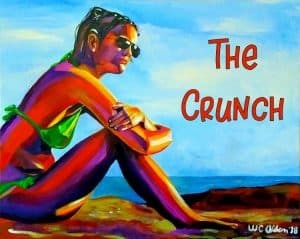
The Crunch — finding peace and contentment in the craziness

Psst! Hey!
** Want more great writing designed to help YOU to shift your behaviour?
** Want to learn how to find, build or deepen your principal relationship?
** Want to know more about Zen living and being?

Life Crunches and a World of Dissatisfaction
The Boomer Generation is fuelling the current crunch, as they have fuelled pretty much everything since the 60’s.
Caveat: I know there are tons of you out there, reading The Pathless Path and belonging to one of the “younger” generations. Please, bear with me. I know you’re sick of the Boomers, and I understand, even though I am one.
The Boomers are the first generation in history to dictate the way the world works. It’s a numbers thing.
So, what’s been happening is “the generation-izing” of entitlement. For the Boomers, the status quo has never been acceptable.
The Boomers drove, and continue to drive, the economy. You can see it in advertising.
I mean, “Botox?” Imagine what past generations would have thought: “Soon, people will be injecting botulism into their faces to look younger.”Or take “Depends.” Fashionable incontinence underwear. I wonder what people leaked into before the Boomers “reached that age?”Or Viagra. Did the Boomers “invent” impotence? Nope. The Boomers refused to settle for limp noodles.
The Boomers are never satisfied with the status quo. What was considered normal for our parents, (like ageing) is now considered to be ‘the enemy.’
At the same time, Boomers are driving Trumpism and far-right groups and politics — “We are supposed to be in charge, and everything is supposed to revolve around us!!”
Let’s shift to work for a moment, which replaces sex for many as their principal turn-on. Money and power have been co-mantras for Boomers, and this has certainly filtered down through the generations that followed. This weird focus is captured in the 80’s bumper sticker, “The man with the most toys when he dies, wins.”
The problem? Many people die before they ever had a chance to live, so caught in the money trap are they. Some won’t even take vacations… “I don’t deserve down-time, for me. I have to work hard, all the time.”
I thought this was captured quite well in a brief e-mail I received:
Gad, but you really do get confused about dates and time when you don’t work! I don’t think that I have ever been truly cognizant as to “time” while I was working. You got up on Monday, you came home, you worked till Friday and behold! You had a weekend! That “special” time that was almost a “holy,” something that we had dreamed about for a whole week. Forty hours we gave up to dream about Friday. Forty hours of our live’s clock, ticking, and ticking and we dream about Friday!
How incredibly sad that our life passage is judged from Monday till Friday! How weird, that all of us, across all nations, spend our lives waiting for “Friday.” Or the “great weekend” which turns out to be — in reality — just a day that we don’t go to “work” but still a day where we “work.” We cut grass, we “re-do” the house, we invite friends over for dinner and “work” to make an enjoyable evening — instead of letting life absorb us and enrich us and take us past “work.” We “work” as we get ready on Sunday to go back to the office to tell everyone what “a great weekend” we had. But that is yet another type of “work.” Make it sound good, or “we” sound unfulfilled, in some sad way, we feel bad. Funny how we make life turn out, isn’t it??
How many have realized they can’t have everything, and have “settled” for endless hours at work? This choice, which is socially acceptable and even encouraged, means life is measured in dollars, promotions or “visibility.”
This is our life, as we’ve made it.
Politically, we’ve had an unprecedented chance, since the 60s, to create a world where everyone has an equal chance at having a meaningful life. That this hasn’t happened is due in part to our unwillingness to share — again, a Boomer trait.
You see it in the current blatant “blame game” — I am getting older, and my life is not the way I dreamed it would be — and — it’s someone else’s fault. Immigrants. Women. Socialists. Welfare recipients. It’s always a “them” — an identifiable, visible other.”
Or, It’s genetics, how we were parented, our spouse, our ex-spouse, our kids… them… “keeping me down, making me unhappy.”
Anyway, this is just a bit of a rant. I want to explore how life might be lived with satisfaction and peace and joy.
The alternative is an openness, a willingness to explore what really turns your crank. And a willingness not to settle for the status quo. For good and for ill, this is the only hope for the 21st century.
A friend asked me the other day if I was still meditating. In all honestly, I sit seldom these days. She’s an artist, and I said, “I find the most meditative thing I can do is paint.” She totally got what I meant.
I find my focus and my direction as I sit quietly with Darbella, and talk about life. I find it with a paint brush. I find it as we travel — opening ourselves to other cultures and norms.
I’m glad for my 32 plus years of doing counselling, but In the last little while I’ve found myself letting go of making that role who I was / am. I’m seeing more and more how what I did was the way I funded exploring who I am.
Stop making excuses for not finding yourself. Stop thinking you’ll do it some day. Stop letting “that’s just the way it is” keep you from wholeness.
Press the limits of what you are capable of, at work, at home, in your interior moments.
Maybe it’s time to get over ourselves and our resistance to being human. Maybe its time to find a better path. And maybe that path is part modern science and part mysticism and part returning to our bodies. I know this for sure. Leaving “well enough alone” ain’t gonna cut it.
After all, we’re a long time dead.
The post The Crunch appeared first on The Pathless Path.
February 18, 2019
Mind, Body, Spirit — the Dilemma

Mind, Body, Spirit — the Dilemma — North Americans are “mind obsessed.” Which is too bad, because there are other arenas of input that can help us.

Psst! Hey!
** Want more great writing designed to help YOU to shift your behaviour?
** Want to learn how to find, build or deepen your principal relationship?
** Want to know more about Zen living and being?
 Using it All
Using it AllI wonder about the essential weirdness of life — where people assume that a change — of partners, location, position, status — will somehow “make things different.”
For example, a friend and her husband had an “escape fund,” into which they put money (and from which they noticed they were extracting money to pay for house repairs…)
It was there, they said, so that they could escape from their lives.
This is really weird — to scrimp and save and squirrel away — in order to run away from the life they are creating, moment by moment. It’s like saying, “My life is unremittingly dull, so I’ll spend 48 weeks of each year in misery so that I can escape for 4 weeks, and then escape more when I retire.”
And then they die, and manage, finally, the ultimate escape.
Others tell me that they are “one step away from finding themselves,” and that one step is never taken. They stop themselves by creating distractions, or they create traumas and illnesses, and self-declared crises and catastrophes. Each one designed to be an excuse to explain why they don’t have a life.
If there are no readily available external crises, they create one. They’ll pick a fight, dredge up the past, and obsess about the future. And then they’ll waste time on their creation, again bypassing making any kind of change.
The “cure,” the alternative, is presence.
Here’s an example. Some time ago, Darbella said that she was feeling “woozy and off.” I could have said, “That’s nice, dear, eat a bagel,” or I could have taken a break to see what was up. I chose the latter, and that led to Bodywork.
I went to work on Dar’s regular sticking places — the sternum and around her jaw and eyes. Dar went into her experience, and I “just pushed.” I won’t get into a big description of what happened, as it was Dar’s experience. For me, my presence, thumbs and elbows were needed, and being in that moment was where true living was.
After finishing that bit of Bodywork, I reflected on how this kind of “contatctful presence” is the essence of living. In the clarity of the moment, simply because one is present, one is no longer lost in the past or in the future — no longer stuck trying to “make meaning” out of anything.
Being present is about being “fully in” our bodies, while fully “out of our heads.”
Our penchant for living in our heads, buried in our interpretations, memories and projections, is the leading cause of dissatisfaction with life. The mind, which works well as a vast storehouse of data, is pretty lousy at attaching meaning. Although, god knows, it tries.
I amaze myself at how easy it is, day in and day out, to choose to attach to ego and to interpretation. In this process, we become our stories. The ego-story becomes our identity. It’s no wonder, then, that death is so fearsome. If what I am is “Wayne,” and that is all I am, then I’m dead. Literally and figuratively.
If I am not my ego, if I am not how I define myself; then I am also not as others define me. Their stories are theirs.
In order to recover a balance of body, mind and spirit, we have to overcompensate for a while. That we have spent most of our lives in our heads, coming up with explanations for ourselves, is not the same as owning and being myself.
Owning and being is a process of intuitive knowing and “simply observing,” as opposed to a mental process of defining.
I find one of the more interesting things that happens during Bodywork is the identification with breath and sensation, and then the immediate pull to “explain away” the experience. As we feel the urging of our bodies — a pull toward wholeness — most tighten back up and head toward denial.
Why such resistance to being present? I think we scare ourselves with the energy we feel flowing within us. The river of chi — that is the essence of “I” — is wide and deep and powerful.
Our mind-created self-image seldom includes such words. And most have resisted feeling it flow. When we feel the profound sense of how alive we could actually be — as our bodies begin to move and vibrate, and our spirits leap within us, we say, “Whoa! Don’t go there! That’s wrong, or nasty or weird.”
And, fearing the disapproval or others, fearing what this might mean about our self-definition, we stop ourselves.
Being non-judgementally with someone as they shout and scream, cry or sob, shake and rock and perhaps breathe and move themselves into ecstasy, flies in the face of what society and our minds tell us is “normal.”
Yet, normal has gotten you exactly the dead-end life you are now living; you know — the one you want to escape from.
Better, far better, to learn to let yourself go. To loosen the bonds and restrictions you place upon yourself. To go inward in the moment and explore how you block yourself from truly being. To expand outward and inhabit your body — fully, deeply, passionately.
There is a place in all of us that is free from the constraints of mind. This place doesn’t need permission, or cooperation from others. It is the place in you that is you, and small as it may be right now, it wants out of the prison.
Not some day, when it’s convenient. Not while on holiday, 2 weeks a year. Not at a workshop down the road. Not by standing out as some ego driven monster, driven by praise. Not by identification with a role.
There is a place inside of you that is already free. Just for a while, work with someone who will help you to live from there. And then, commit to living from there, all the time.
The post Mind, Body, Spirit — the Dilemma appeared first on The Pathless Path.
February 4, 2019
In the Know, in the Now
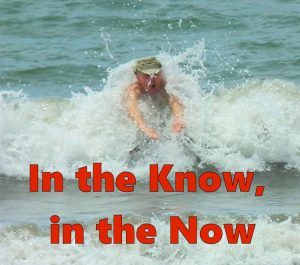
In the Know, in the Now — Of key importance is the ability to stay grounded in the moment. Meditation helps, as does Breathwork.

Psst! Hey!
** Want more great writing designed to help YOU to shift your behaviour?
** Want to learn how to find, build or deepen your principal relationship?
** Want to know more about Zen living and being?

I worked with a client for many sessions, and I certainly intrigued myself with how she set up her life.
I mentioned her a couple of weeks ago in The Pathless Path — she was in a care-giving profession, had been married for a decade or so, and had a couple of kids.
She’d been diagnosed over the years as being “depressed.” I add the “quotes” because my sense of her was that she’d learned to “use” her diagnosis of “depression” to keep from dealing with the mess that was her life.
Here’s how she did it.
As a person both trained and conditioned to be a helper, her life was devoted to finding things that were “wrong” for (or with) other people. After all, you can’t help is nothing is wrong. She’d then have a purpose — she’d fix what was wrong.
She’d learned from her dad to be a peace-maker and a “happy-maker.” People who do this do it for several reasons.
First, it papers over stress and difficulty.
Second, it gives the caregiver a purpose and an identity.
Third, there is the hidden motive of reciprocity.
“Reciprocity thinking” is that, if only I help… give… do… for others — somehow, this will force others to do the same for me. And I suppose on some imaginary, perfect world where the sky is green, this may indeed happen.
On planet Earth, I’m not so sure.
Now, why would this be? Well, the person being served soon sees the helper as, well, a servant. And masters do not serve the people who serve them. It does get confused within families, what with all of that supposed love floating around and all, but I think the same rules mostly apply, though.
The giver gives, forever, while the taker(s) take(s).
So, what’s the way out? Well, from The Phoenix Perspective, one only gives what one chooses to give — freely, and without expectation of reward — and one asks for what one wants.
I’m not meaning that to sound harsh. The “chooses” part goes like this: I do not give out of obligation. I do not give out of “role” (“I’m a mother, so therefore I have to eat the burned end of the pot roast.”) I do not give to manipulate.
I do remind those around me that their life-purpose is to learn to look after themselves — to stand on their own two feet. My life-purpose is to learn to stand on mine.
In other words, what I choose to do is voluntary. And my choice to be of service serves only one thing — through being of service, I learn about me.
My client had spent 10 years trying to find her identity, earn points and be socially acceptable in her roles. During that time, she drove herself to exhaustion, and managed to “win” a depression diagnosis.
She was waiting for it to be “her time,” as time slipped through her fingers. The slippage had only one result. She tried harder.
Now, here’s the interesting part. Depression became her unconscious tool.
One word was non-existent in her vocabulary= “no.” If she was asked, she did what she was asked. It doesn’t take a rocket scientist to realize that a person so “motivated” is going to burn out.
My client avoided burn out by getting depressed. Think about it. Rather than having to say, “No, kids, I don’t want to take you to see a movie this week,” she would say, “Mommy would love to take you, but mommy is sad right now. Maybe when mommy feels better.”
Because in the world she’d created, it was not OK to say no. It was OK to get sick.
I proposed an exercise or two:
I asked her to have a breath and just sit for a moment. Then, I asked her to direct her attention to the moment, and to tell me whether anything was wrong, right then. She scrunched up her face and started thinking. She began to list other stuff — past and future — that she was worrying herself over or obsessing about.
I reached over and squeezed her toe. “Nope. Not in your head. Here and now, what’s wrong?”
In the now, there are four choices — accept the situation, change it, or leave it. (The fourth option, whining about it, while doing nothing else, is the most popular, and is stupid in the extreme.)
My client was not into acceptance, as the situation was intolerable, physically and mentally. She was not ready to leave, so her choices are two, whine or change things. She saw this, as she sat with me, breathing, and realized that, in the moment, nothing, absolutely nothing, was wrong.
It just WAS. And she saw the obvious — she had choices.
The other thing I taught her was to breathe. I encourage everyone to “take a breath,” as, most people hold their breath when stressed.
How this is done is described on our web site.
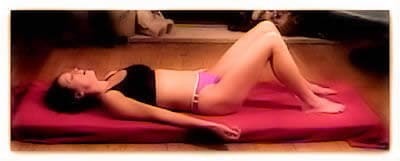 breathing posture, from our website
breathing posture, from our websiteThis particular client was quite resistant to getting into breathing. She’d talk. She’d breathe funny or keep “forgetting” what she was doing. And she asked a ton of questions instead of breathing. Despite all of that, and despite not quite allowing herself to “get” breathing, on her third try, her eyes popped open and she said, “I can feel my hands and feet!”
Amazing, eh? That was a really big thing for her — she was feeling instead of thinking.
Finally, she sat up, and we sat side by side on the floor. A couple of times, she stretched out her hand, as she was talking, and touched the back of my hand. At one point, we just sat there and looked into each other’s eyes. In that moment of presence, the rest of the world receded and all there was was the breath, the moment and the connection.
We all have the potential to shift the games we have made for ourselves. We have the opportunity to find ourselves outside of the roles we have used to identify ourselves. We have the chance to stand forth in a new and vibrant way, and re-connect to the core of our beings.
To do so, we have to change — everything.
Or, we can do the easy thing. we can stick to our old ways, make ourselves into victims, and stay stuck. We can “alter our prescription,” or we can go numb.
Either way, life will go on.
I trust you will choose well.
The post In the Know, in the Now appeared first on The Pathless Path.



